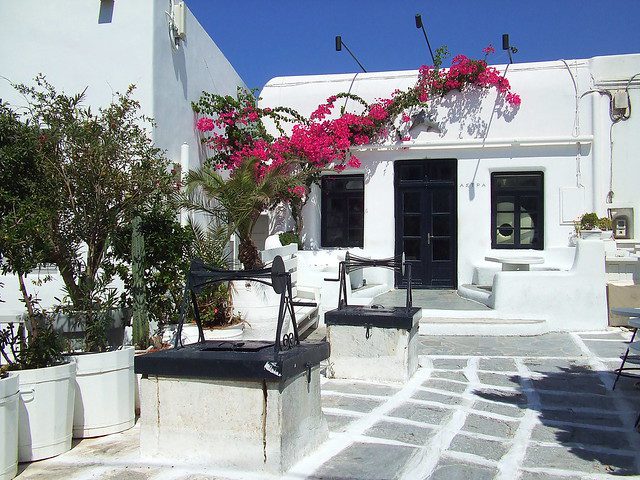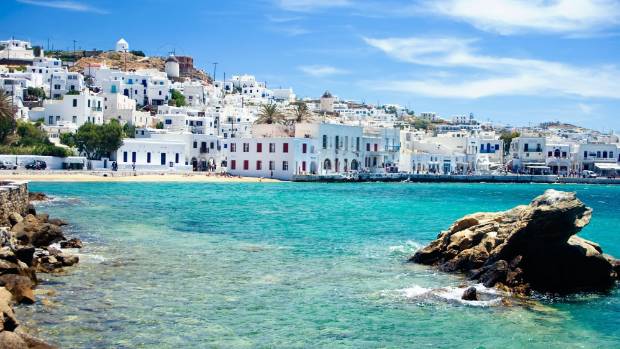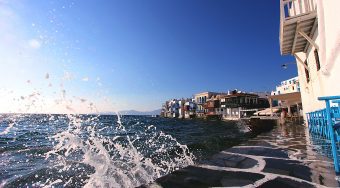Mykonos has a rich history that is steeped in wonder and mythology, just like many of the beautiful Greek islands. It is located at the heart of the Cycladic island has always been an important centre for many nations. Greek myth has it that Hercules threw the bodies of slain giants into the ocean as part of his 12 trials. These hardened to rock and formed the island that we know today. Through the ages there have been many changes and influences on the island, all coming together to create a rich tapestry of history. This article will cover many of the important historical sights of Mykonos and its neighbouring island of Delos.
Armenistis Lighthouse
Built towards the end of the 19th century, this lighthouse remains an important and active site of historical interest in the north of the island. It has been well preserved in its architectural style, as a 19-metre tall white tower with the octagonal light which still operates today. It is under the preservation of the Hellenic Naval Hydrographic Office. Located at the very north of the island, close to the Aghios Stefanos bay. As the sun sets and the boat comes into harbour, it has absolutely beautiful views and is well worth visiting if you are in the area. It can be accessed by bus from Aghios Stefanos or via private hire vehicle.
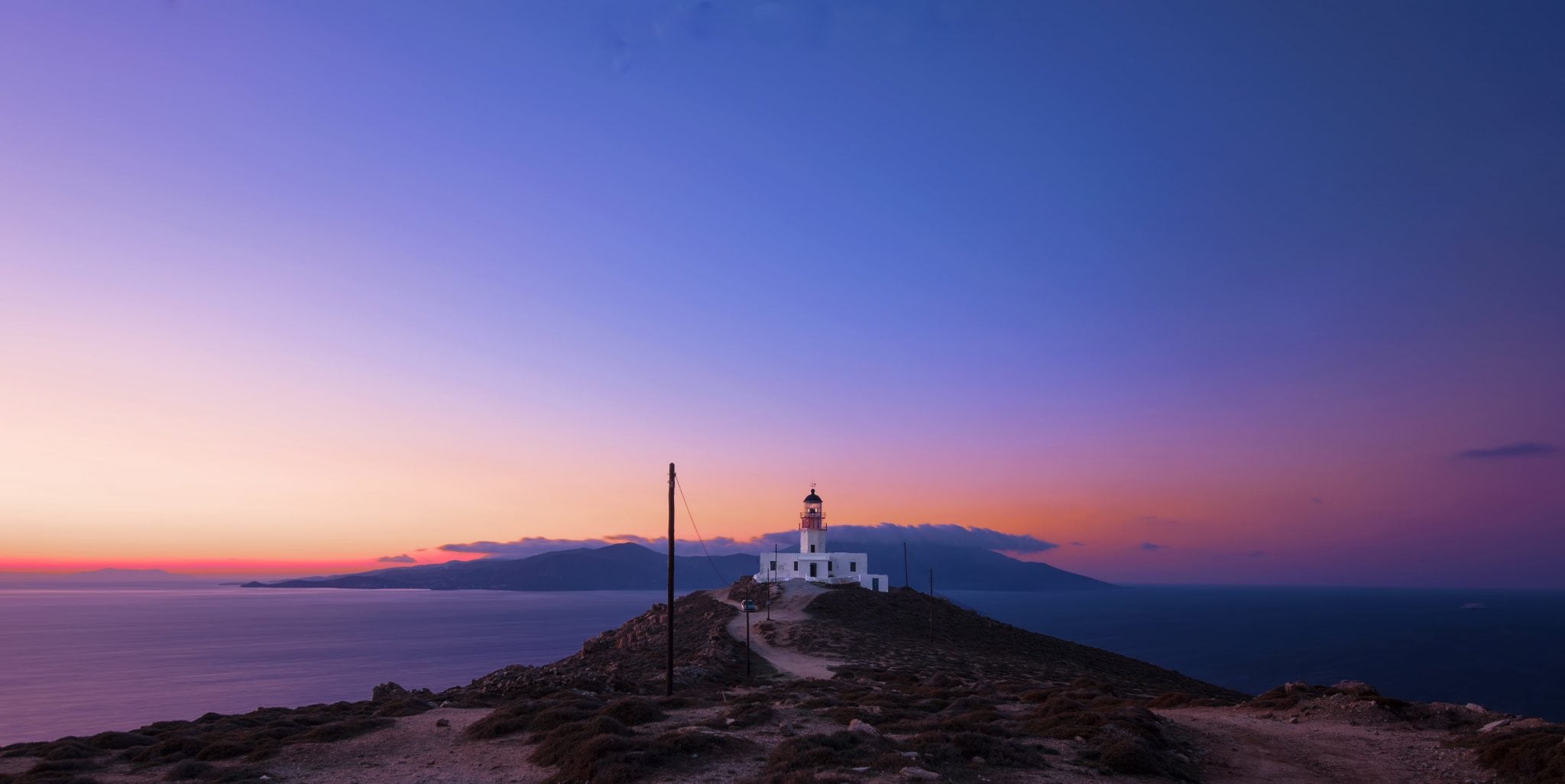
Ancient Ftelia
Located at the southern edge of the bay that dips in from the north of the island is the hillside containing the ancient site of Ftelia. This is a Neolithic settlement that dates back to the 5th and 4th millennium BC. Time has eroded many of the details away, but there is still plenty to see. For example, the upper building at the top of the hill, believed to be the megaron is perfectly oriented north-south and the 1.5-metre walls still remain. The site comprises of 4-levels and covers a space of land about half a hectare. An ancient tomb was discovered by archaeologists, which is believed to be the resting place of the Homeric hero, Ajax the Locrian from the Iliad. A number of findings were found here, including pottery, ceramics and obsidian tools and weapons. There are guided tours of the site, which will add context and bring this historical place to life. Also, at the bay nearby, there is a beach. This is usually incredibly windy and is better for windsurfing than sunbathing.
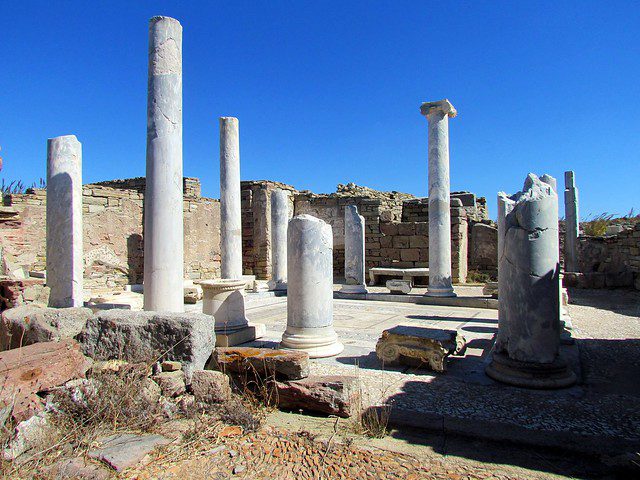
Gyzi Castle
In the centre of the island and to the east is the village known as Ano Mera, one of the biggest places after Chora. In the hills above are the remains of a 13th-century castle, that belonged to the Gyzi dynasty. This was a family of Venetian nobles, who occupied the Cycladic islands at the time. The castle was built in the Venetian medieval style and differs from the typical Cycladic architectural style. It served as a fortress of defence against other nations and raiding pirates, and to this day it still provides excellent views to the north of the island. A lot of the castle has degraded or been destroyed, but there is still enough to see at this free site. There are also remains of the ancient Mykonos city, including a marketplace, cemetery and fortification wall. Whatsmore can visit the 18th century Church of the Holy Saviour nearby.

Delos Island
An island in its own right, but it is very small and typically accessible from the Old Port at Mykonos. Delos is said to be the birthplace of Apollo and Artemis, created by Poseidon on behalf of his brother Zeus and the final settlement of the Hyperborean society. It is known to historians to be inhabited during the Bronze Age and was conquered by the Ionians in the 10th century BC. In the 5th century BC, it was the meeting place for the Delian League, a confederacy of Greek city-states, defending the Aegean sea against the Persian armies. It was considered an extremely holy island in the Classical era. There were temples and shrines of worship to many gods and heroes, including Apollo, Artemis, Zeus, Hera, Asclepios, Athena, Leto and Hercules. The temple of Apollo was known to have had an 8m tall, golden and wooden statue. Alongside the remains of the religious sanctuaries, there were a number of other notable historic structures. The propylaea entranceway, the gymnasium and athletic stadium, a marketplace, theatre and several stoa. You can still see 5 of the original 9 marble lions that guard the sacred lake on the island.
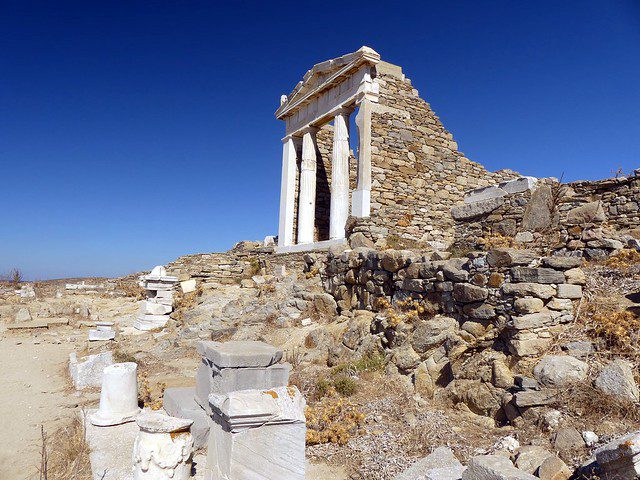
Windmills of Mykonos Town
One of the iconic sights of Mykonos and an important part of the history of the island are the windmills. Known locally as the Kato Myloi, the design for the wheel is an innovative one, that has proved effective across the Cyclades. Just up from the main part of Mykonos Town or Chora are the windmills, displaying the beautiful whitewashed walls and classic blue highlights. They were once used to grind grain for the daily bread of the locals. They are no longer in use, but they nonetheless remain a romantic throwback to the culture of the island. The views of Chora and Little Venice from the windmills are absolutely stunning, particularly at sunset. It is advisable to bring appropriate clothing when visiting, however, due to the strong winds.

Manto Mavrogenous Square
One of the central locations of Chora is the square dedicated to Manto Mavrogenous. She was a revolutionary member of the Greek fight for independence in the early 19th century, against the Ottoman Empire. Born in Trieste, Italy she was known as the beautiful, Greek, aristocratic woman. She was highly educated and influenced by the ideas of the Enlightenment, and used her wealth and influence to support the cause in the Greek War of Independence. She helped found the Filiki Etairia, an underground, revolutionary organisation. Today you can find a bust of her, dedicated to her service in the War of Independence. Other inhabitants of Mykonos also played a crucial role, with their ship fleet and talented sailors, against the Turkish Occupation of Greece.

Three Wells
Right in the heart of the old part of Mykonos Town are the Three Wells that are lined up in a row. They are dug to a small depth of 5-6m deep, but they used to supply this part of town with its drinking water. There are a number of legends around drinking from the three wells, including good luck and a virgin finding a handsome husband. They were in use until the mid-20th century, where they now stand as a quaint reminder of older times.
